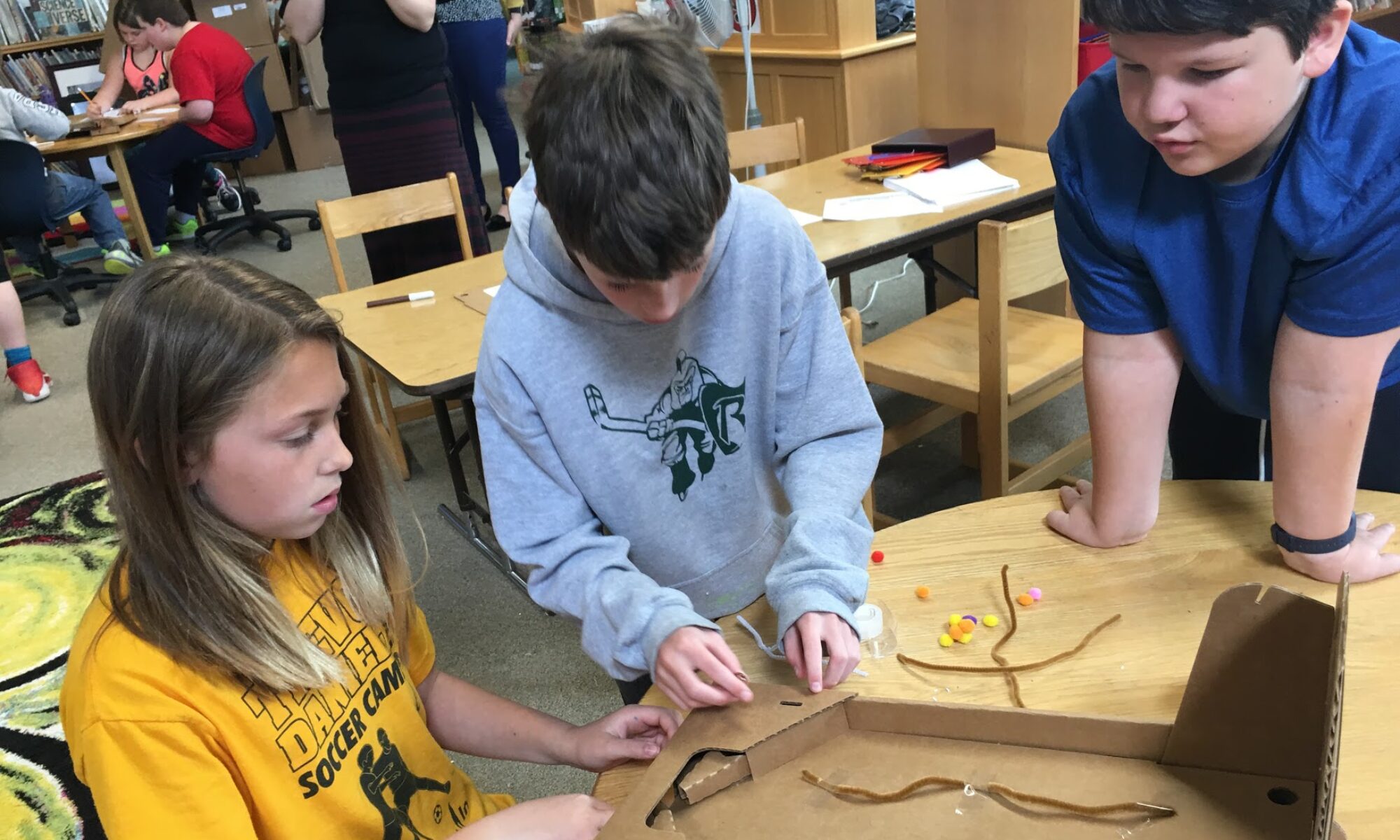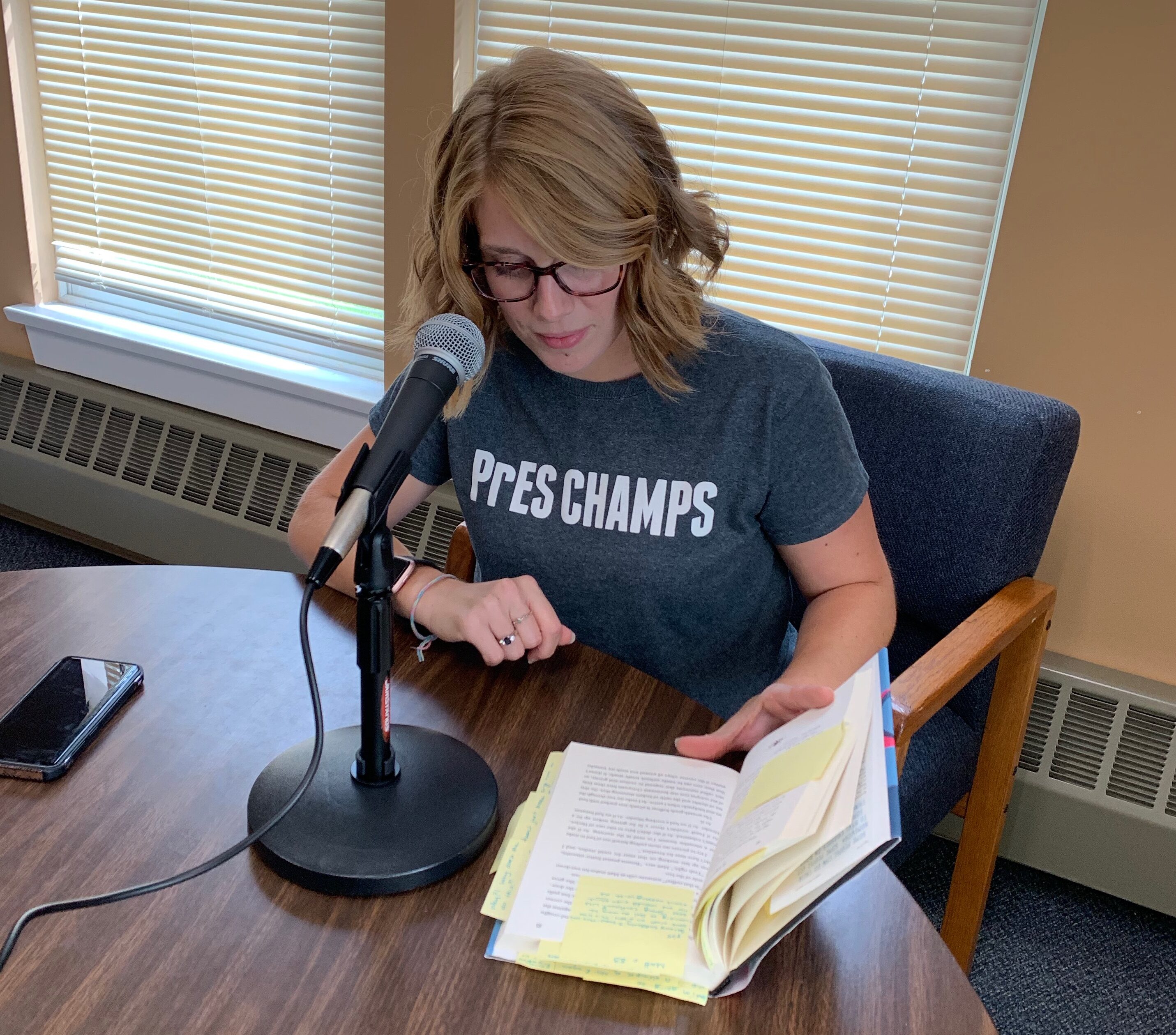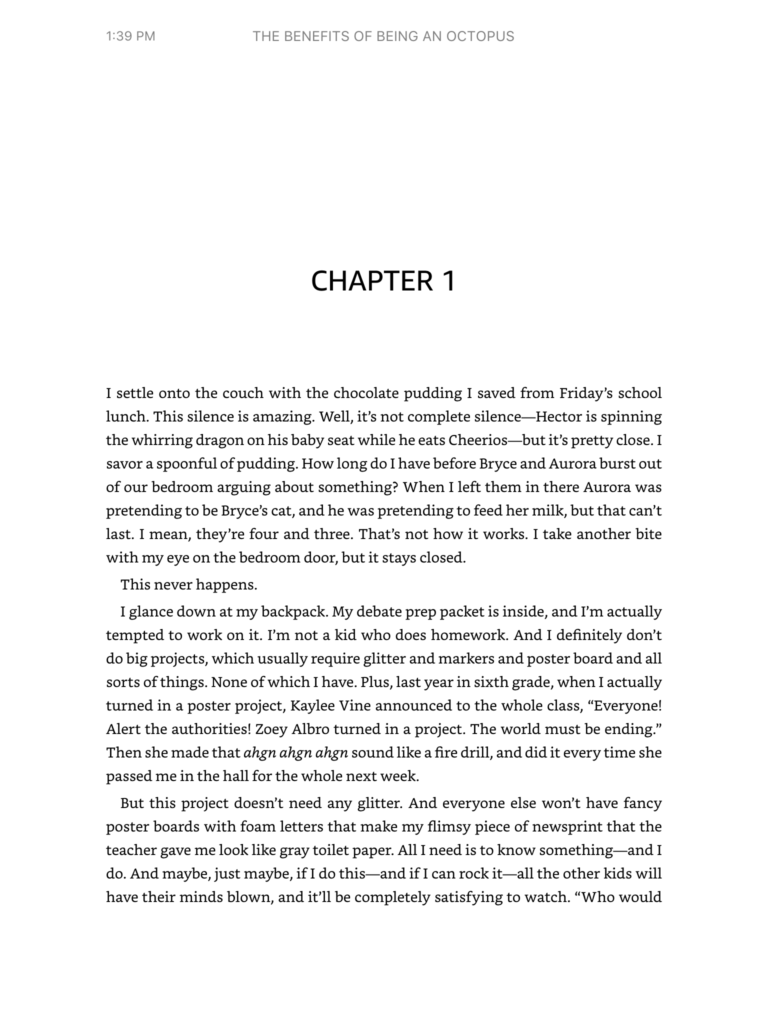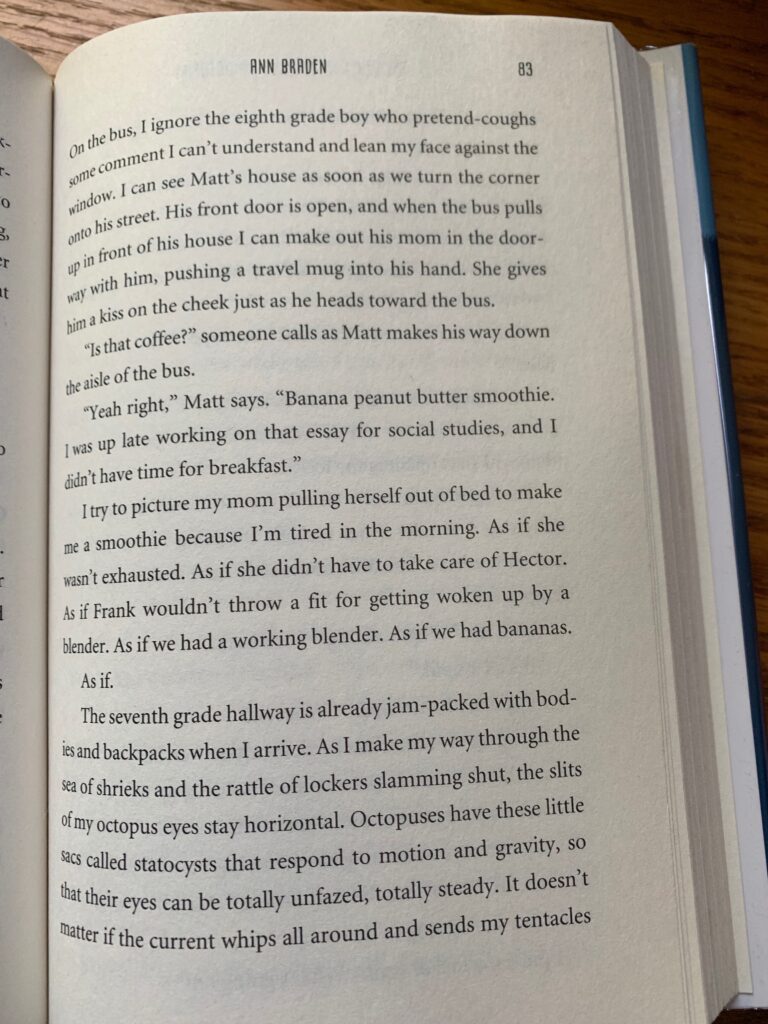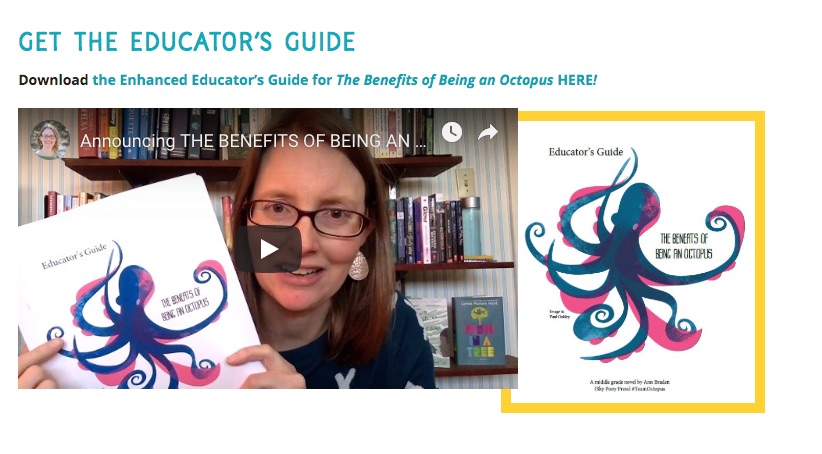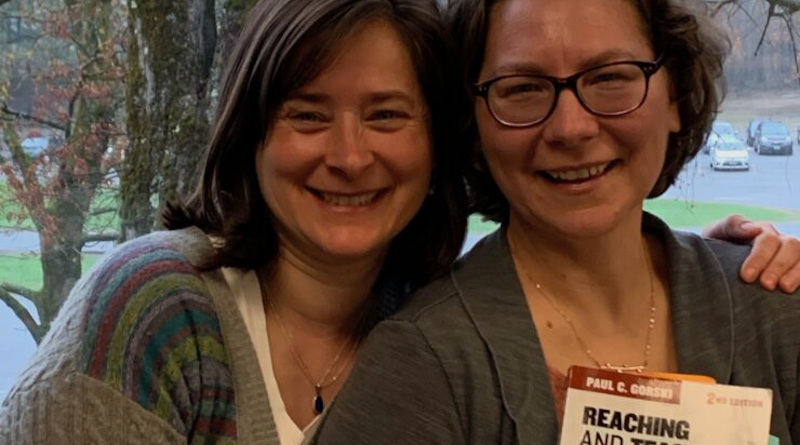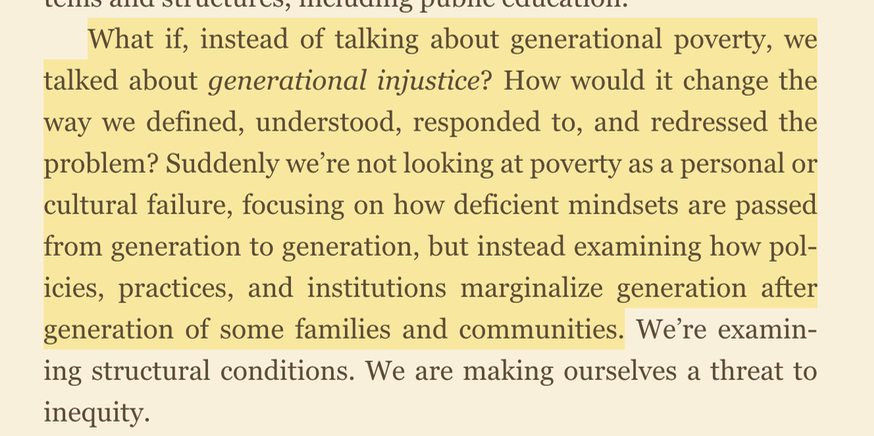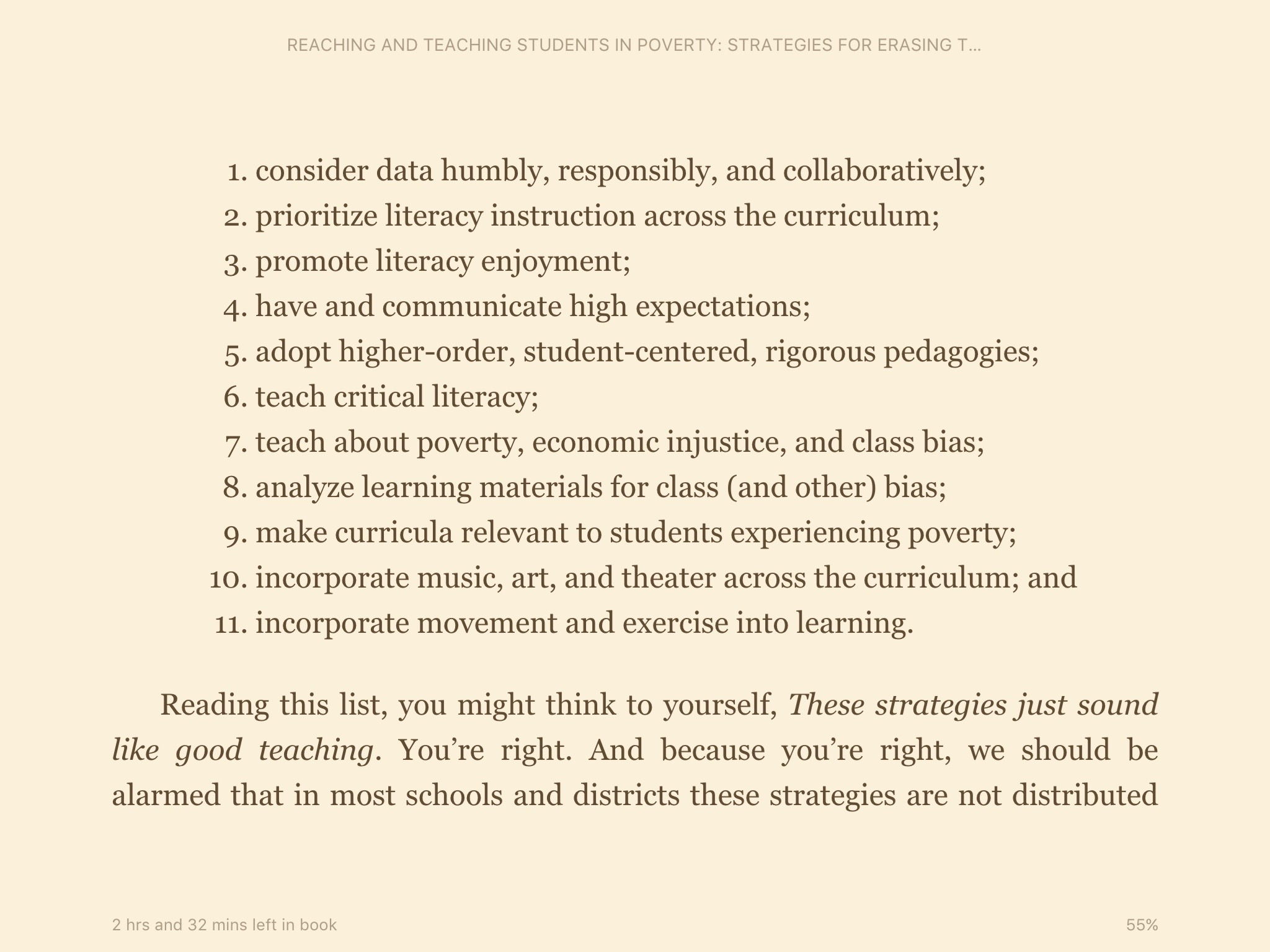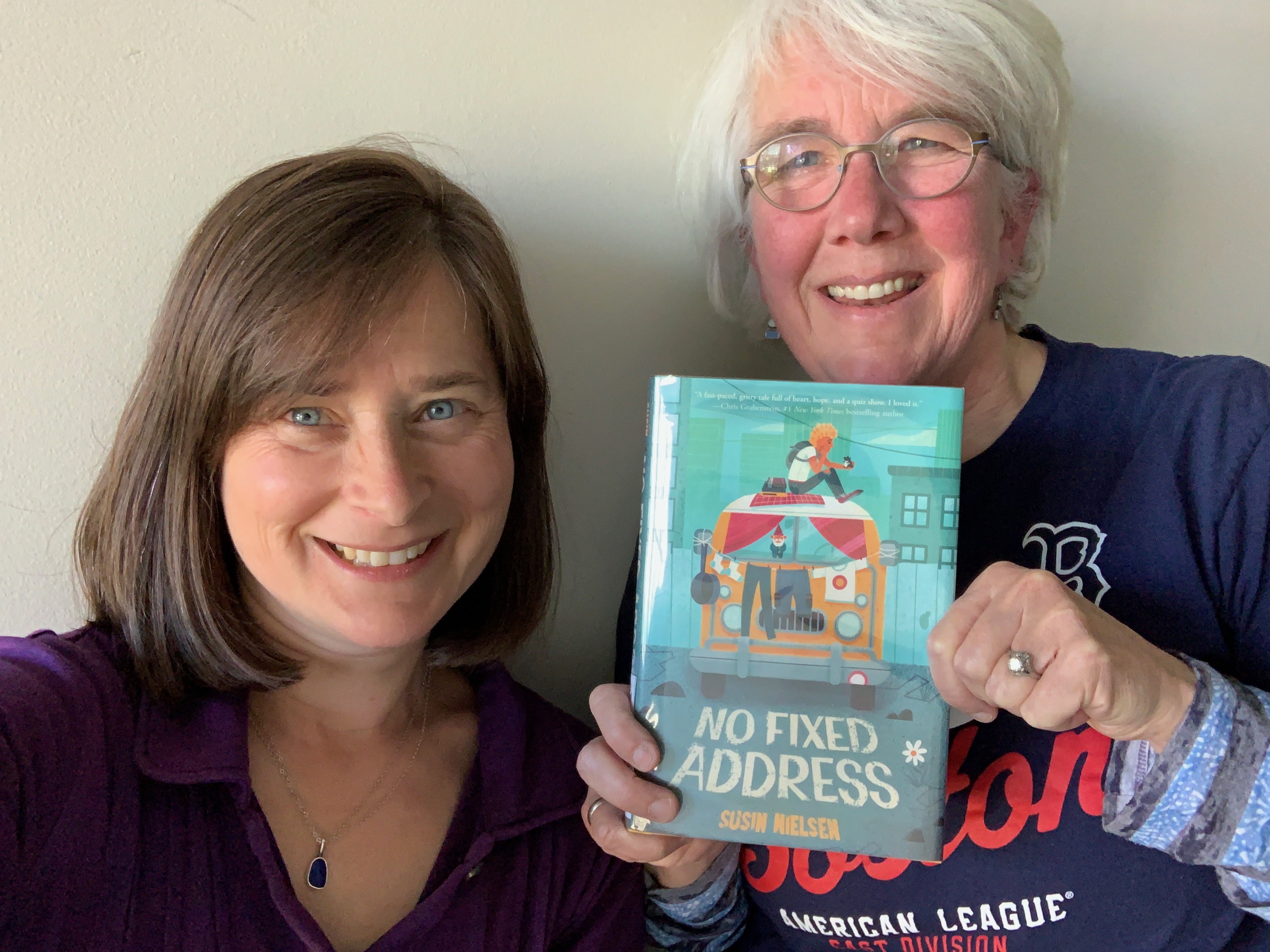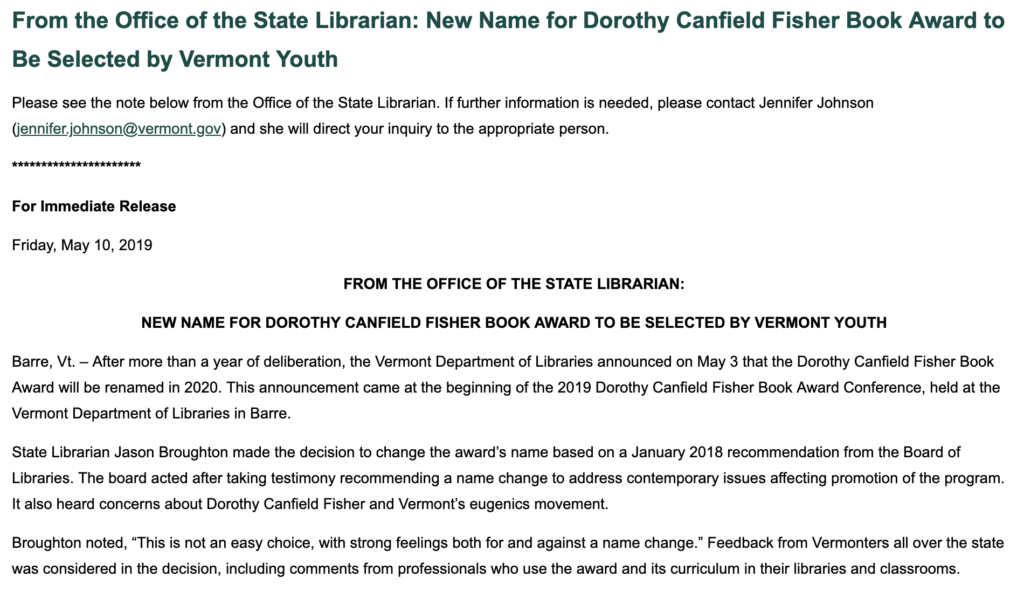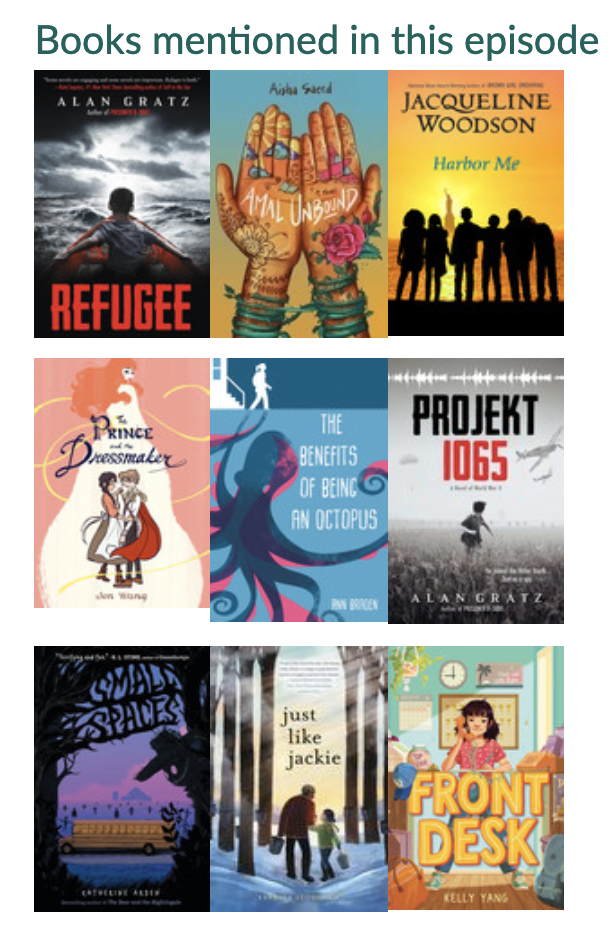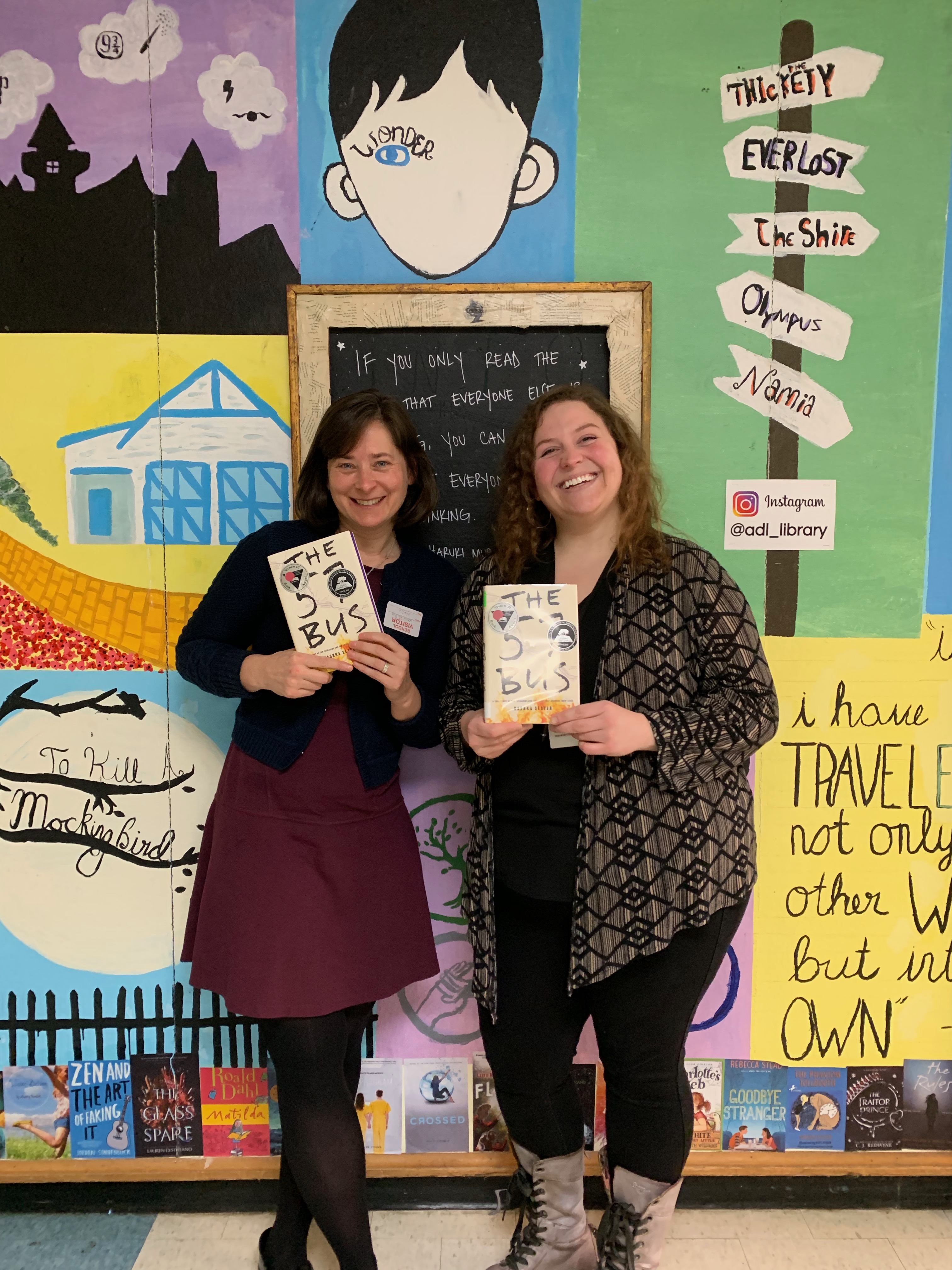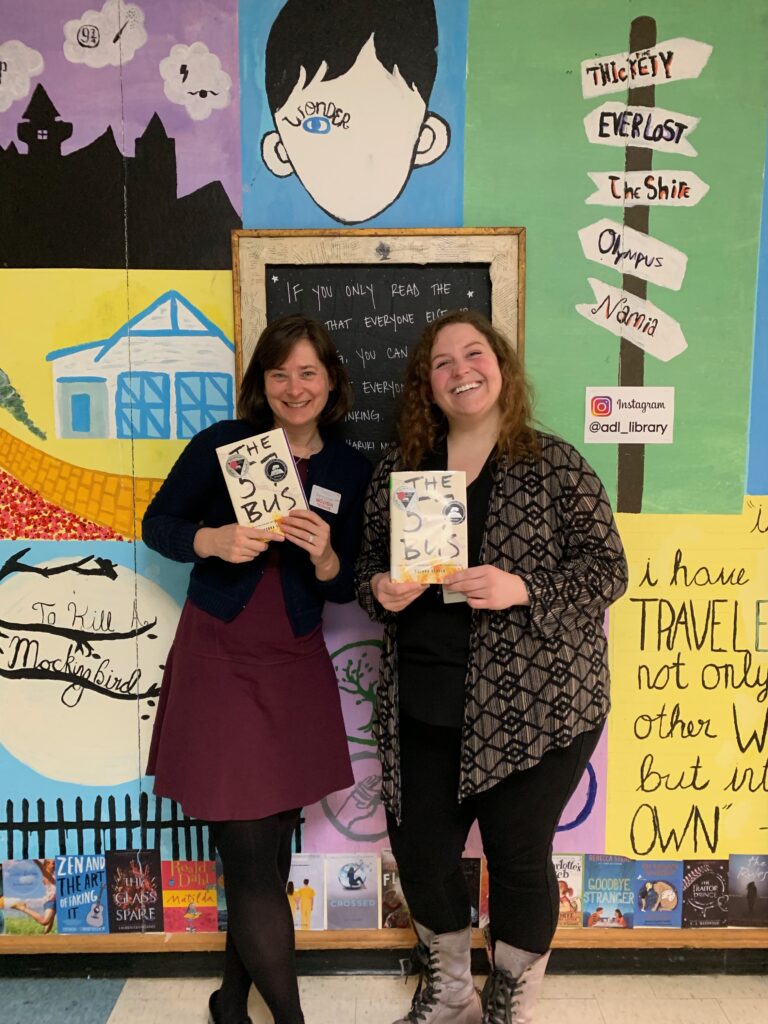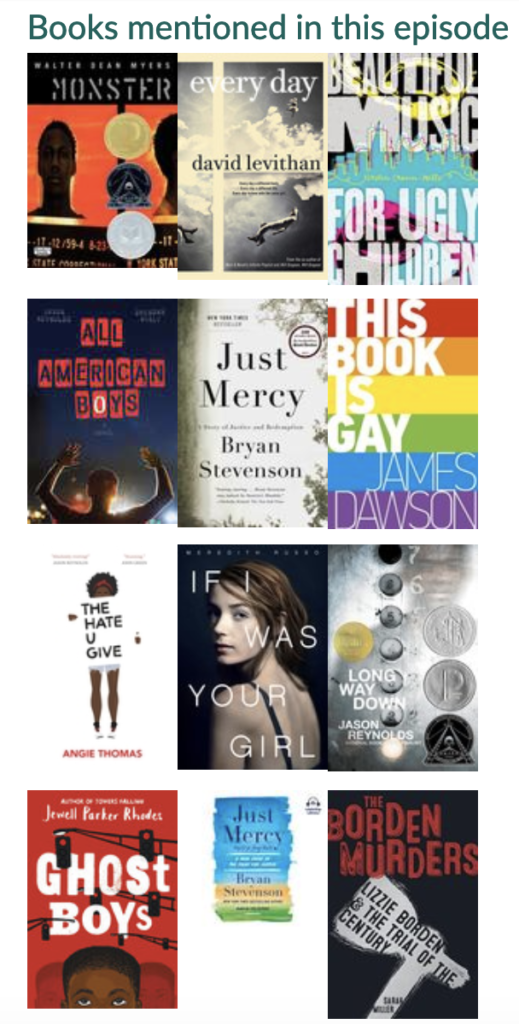This one goes deep, folks. On this episode educator Corey Smith joins me to talk about The Benefits of Being an Octopus, by Ann Braden. We talk glitter and posterboard, coffee and peanut-butter smoothies, and using the Equity Literacy Framework to dismantle inequality in our systems of learning with both students AND adults. What might we — and you — miss about students’ complicated home lives? And what can we learn from gun control debates about community conversations?
Told ya. Strap in. It’s #vted Reads.
Let’s chat.
Jeanie: I’m Jeanie Phillips and welcome to #vted Reads, we’re here to talk books for educators by educators and with educators. Today I’m with Corey Smith and we’ll be talking about The Benefits of Being an Octopus by Ann Braden. Thank you for joining me, Corey. Tell us a little bit about who you are and what you do.

Corey: Sure. Thanks for having me. So, my name is Corey Smith and I work at the Greater Rutland County Supervisory Union. Up until last year, I was a classroom teacher. I had taught first grade, second grade, third grade and fourth grade with third grade being my most recent and at the end of the year I was given the opportunity to become a PBL coach. So now I get to have the opportunity to go into the schools within our district and work with the teachers to implement project-based learning, proficiency-based education, place-based learning, technology and student-centered learning. So that’s what I do now.
Jeanie: Excellent. We are recording in the school in which Corey was a first, second, third and fourth grade teacher, Proctor Elementary School, in Proctor VT. And I’ve got to tell you, there’s more flexible seating in this school than I’ve seen anywhere. It’s really a lovely, lovely building. Thanks for inviting me in.

Corey: Thanks for coming here.
Jeanie: So I’m going to start us off with my favorite question.
What are you reading now?
Corey: So, I am reading Harbor Me by Jacqueline Woodson right now. I have an 11 year old, sixth grader at home who has been an incredibly reluctant reader his entire life and this year’s DCF lists came out and it excited him and he has been reading nonstop, so we decided to pick out a book from the DCF list to read together. So that’s what we’re reading. We’re not too far into it yet, but I’m really excited about it so far.
Jeanie: I really love all of Jacqueline Woodson’s books, but Harbor Me was a really special one. I think it’s a great empathy builder. So good choice for both of you. So let’s get to this book which we both adored and which Vermont educators are really loving and educators all over the country, The Benefits of Being an Octopus by Ann Braden. I wondered if you could introduce us to Zoey by reading the first few paragraphs of the book.
Jeanie: Perfect. So here we’ve got Zoey, she’s a seventh grader. She’s got a lot of responsibilities.
Corey: Zoey has two younger brothers and a younger sister. We just met Bryce and Aurora, three and four, and then she has an even younger sibling, Hector, who is around toddler age.
And Zoey is responsible for caring for these kids because her mom works.
In the afternoon, Zoey will get off the bus and she’ll meet the kids at their bus stop to pick them up to take them home. She’ll go to the pizza shop where her mom works to pick up the baby and she cares for these kids. As you get to know her, you find that a lot of what caring for the kids means is keeping them quiet. Making sure that they’re not interrupting others adults in the house.
Jeanie: Yeah. She gets them ready for school every morning. I mean, it’s hard enough to get myself ready for work! But she’s a seventh grader who gets herself ready for school *and* she gets two of these three kids ready to get onto the Head Start bus every single school day.
Corey: It’s amazing.
Jeanie: It’s a tremendous amount of responsibility and yet we could also hear the way Zoey’s teachers must see her: she owns up that she doesn’t really do projects or homework. So, I’m sure that given the lens of school, they really see her as a not-responsible person.
Corey: As I read the book, what struck me was my own teaching practice. And I really used the book to reflect upon myself as a teacher. How many times have I made quick judgements about students without really knowing who they are, what their background is, what they come to school with every day. With Zoey as the reader, she comes off as incredibly responsible, a caretaker. And yet the people at school don’t see that from her.
Jeanie: Yeah. I love that Ann Braden as an author, gives us this real appreciative lens to look at Zoey and her many strengths — and she has so many!
Corey: She does.
Jeanie: She’s a creative as a caretaker of these children. She makes up stories every single evening.
Corey: Yeah. I love the stories! The stories that she tells them are incredible.
Jeanie: Right? And yet at school she’s completely silent. But at home, she’s this incredible story-weaver. What other strengths did you notice in Zoey?
Corey: Zoey’s incredibly creative — though it comes out in ways that we might not expect, or ways that most people wouldn’t see from her. She is adaptable. I don’t know that she views herself as adaptable? But she has so many different situations within her life, so many responsibilities. And she adapts to what she needs to be for each of those people in her life. Her friend Silas, her friend Fuchsia, her siblings, her mom — we see her take on different… I don’t want to say personalities, but different *characteristics* to help her be the strong person in each of those scenarios.
I also thought she was incredibly brave for everything that she goes through.
She is a seventh grader. So that puts her at 12 or 13. And… look at everything that she’s going through! I felt like she’s the glue that holds her family together, that she’s the one who brings the family together and make sure that it functions.
Jeanie: Yes! Her mother could not do it without her, for sure. And that brings up that Zoey has a lot of obstacles in her life. There are a lot of struggles and obstacles to her success, not just in school but in general.
I wondered if we wanted to name some of those obstacles that Zoey faces.
Corey: Yeah. I feel like a lot of her strengths are also obstacles. Being the caregiver is a strength for her, but at the same time, it’s an obstacle. Because she is a seventh grader who does not get to do seventh grade things. If you look through what she had to go through to get paperwork signed to be on the debate club, it wasn’t what your typical seventh grade student would have to do.
I think another one of her struggles is her family dynamic.
Mom works quite a bit and when she comes home she has to be a caregiver, not necessarily to the children, but to her boyfriend and her boyfriend’s father. Zoey is responsible for making sure the kids are quiet so that Lenny, the stepfather, or boyfriend, doesn’t get agitated or annoyed at the kids. So, I think her family life can be a struggle.
Jeanie: Right. And her family is complicated, right? She has a father: her father is one man. The two older siblings have a different father and then Hector’s father is Lenny. And Lenny doesn’t have a lot of affection for Zoey or her two older siblings. He only has eyes for Hector and Zoey, her housing situation has been rocky… And she’s really invested in staying in this house, in this trailer because it’s clean. Because it’s tidy. Because it’s a home. But Lenny doesn’t make that easy for them. He’s got pretty strict high standards — especially given that there are toddlers. And he’s… well, he seems like a stable guy: he’s got a job, the place is tidy, the bills are mostly paid.
But he’s got other issues.
Corey: …Yeah. You hear the way that he talks to people throughout the story especially to Zoey’s mom and you hear a lot of blaming. So he does come off as being this responsible guy who provides, but at the same time he provides the home, but not the stability or the caring environment that these kids need.
Jeanie: Yeah. He undercuts Zoey’s mom a lot and she spends a lot of time wondering why her mom isn’t as strong as she remembers her. And that’s another obstacle, I think. Zoey’s concern for her mother and her mother’s wellbeing and the whole family’s wellbeing. She carries a lot.
Corey: I think at some point too, she starts to hear what Lenny is saying to her mom and she starts questioning herself and wondering if she fits those character traits that Lenny *says* her mom has, not necessarily that her mom does have.
Jeanie: Right. Yeah. There’s a lot of emotional tension in this house that Zoey has to navigate constantly.
Then there are just these like practical things, these obstacles to just belonging that Zoey carries.
Her clothes are usually not clean. She rarely has time to brush her hair or her sibling’s hair. So her appearance — at a time when appearance is everything, seventh grade — her appearance doesn’t really fit in and so she gets made fun of for the way she looks or smells. And so she’s really… doesn’t have a sense of belonging at school.
Corey: No, and because of her family struggles, she comes with assignments not done. She doesn’t participate in extracurricular activities like other kids do. So when she does, kids tend to poke fun at her.
Jeanie: Yeah. It just flies just under the radar in ways that we’re a little familiar with I think when we spend time in schools.
So, the octopus comes out having a really special meaning for Zoey.
I wondered, given the title, The Benefits Of Being An Octopus and the octopus theme runs throughout the book, if you want to talk a little bit about what the octopus represents for Zoey.
Corey: Yeah. So, Zoey brings up the octopus pretty quickly at the beginning of the book because she has this assignment that she’s thinking that she might actually complete this time. They have to debate which animal they think is the best. And so she goes on to explain the octopus and she views the octopus as this really strong creature. That it has multiple tentacles or arms, which would allow her to handle multiple tasks at a time: do her homework, pack her backpack, take care of the kids.
She talks about how the octopus can camouflage itself. So if it’s in a really nervous situation? If that were her, she could blend in, people wouldn’t necessarily notice her during those really uncomfortable times.
She at one point talks about the octopus starting out as this really small vulnerable creature and it grows into this really powerful creature. And that it sort of defies the odds in that sense. And that she wishes that that could be her, that I think she feels pretty small, maybe invisible or potentially even useless. That if she were this octopus, she could grow into this creature that is powerful and doesn’t let things bother her.
She oftentimes is listening near her mother’s bedroom to how Lenny is talking to her mother. And when she talks about going up to these spaces to do things, she’s talking about slinking along. How quiet and stealthy an octopus is, which would allow her to do what she’s doing in taking care of her family and keeping them safe? Without the challenges in her life affecting her.
Jeanie: You know, at Middle Grades Institute, Ann Braden, the author came to meet with teachers and talk about this book and I had lunch with her, with a couple other MGI folks. She, and a couple of us have this great fondness for animal names of groups of animals.
Like the one I recently came across was a group of hummingbirds is called a charm. A charm of hummingbirds.
Another one is a flamboyance of flamingos. They’re so much fun!
So I looked up what a group of octopus is called — and turns out, by the way, you guys, Zoey tells me that the plural could be octopi or octopus. So I’m choosing octopus, a group of octopus doesn’t have a name because octopus are solitary creatures. It occurs to me that Zooey is also a very solitary creature. She doesn’t really feel like she fits in anywhere.
Corey: I think she views the octopus as this big, strong creature but at the same time, a creature that’s by itself. One of the things I was thinking of as I was reading the book is she talks so much about how if she were an octopus and I think she’s more like the octopus than she ever gives herself credit for, in the ways of being solitary but also in the ways of strength.
Jeanie: Yes! Yes. She has *so* many strengths. And also in the way of camouflage! She often flies under the radar at school, from her peers, and from her teachers. Except one teacher who takes a special interest in her: Ms. Rochambeau, her social studies teacher. I’m just going to pull up page 38 to do a little introducing of this teacher.
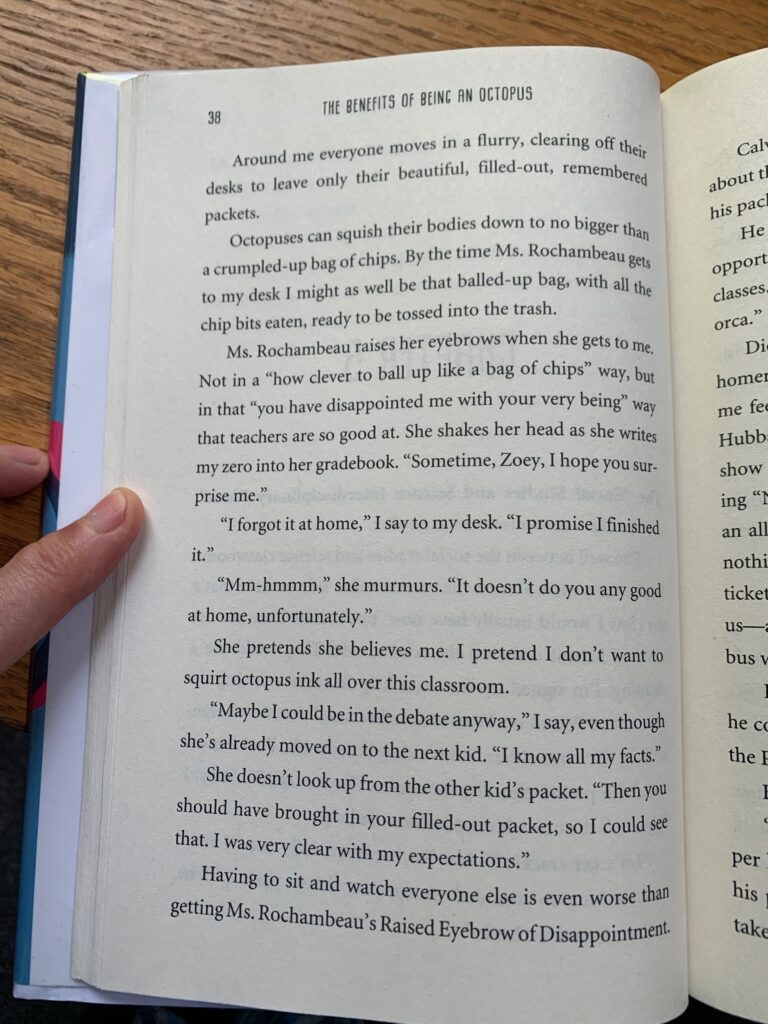
Phew! What are you thinking about that Corey?
Corey: Yeah, I had mixed feelings about Ms. Rochambeau! You read passages like that and oh, the emotions. You feel very frustrated. And then there are moments throughout the book where I think maybe she gets Zoey? But she goes back and forth so often that I really wonder if she really understands who Zoey is. And then I think about me and being a teacher and I wonder how many times have I done that exact thing to a student. Not intentionally, but out of frustration. So I try to see Mrs. Rochambeau’s or Miss Rochambeau’s point of view, but at the same time it’s…
You come away feeling hurt for Zoey.
Jeanie: Yeah. Yes. I think one of the things that really interests me is that while I was doing research for this episode and thinking about what we were going to talk about, I stumbled across this really interesting website. It’s called Writing Mindsets. ‘Using mentor texts to analyze how kids see schools and teachers.’
And the author of this blog has pulled a bunch of pieces from young adult and middle grades literature — including Harbor Me, by the way — to look at teachers in schools through the lens of young students and imagine what *they* see.
It really made me think about my own experience as a school librarian and the ways I might have come across in ways I didn’t intend to. It lets me reflect on that. And reflect on how much power our words and our tone and our way of being in a classroom has and in ways that we don’t intend, or realize.
And Ms. Rochambeau I think would be mortified to know what’s going on in Zoey’s mind.
Corey: Yeah. I think it goes, I think throughout the book as she’s trying to reach out to Zoey, you see those moments where she thinks she’s doing the right thing. So I think it’s very unintentional, but at the same time, sometimes she comes off as this villain.
Jeanie: I have to say what I appreciated about how Ann Braden wrote Ms. Rochambeau is that Ms. Rochambeau gets these glimpses of Zoey. She sees her in this particularly tense moment in the bus stop when things go awry and she’s picking up her siblings. So she gets to see these little windows into Zoey’s real life and the responsibility that Zoey is caring and so she becomes more empathetic.
But I also really appreciated that she didn’t rescue Zoey.
That this does not use that teacher as savior trope, that we are complicated people as educators. And that it’s not our job to save kids.
Corey: No. I don’t think it’s realistic for us. I think what she did do is she gave Zoey the stepping-off points that Zoey needed to save herself. That Zoey may not have been happy with how the whole debate club came about, but if she was never given that push. Everything that came of that — standing up for her friends, standing up for her family — never would have happened.
So, I think that she was not Zoey’s savior your by any means. But she certainly gave Zoey the tools that she needed to be her own savior.
Jeanie: Ms. Rochambeau eventually does see some real potential in Zoey, and she invites her into this after school debate club and offers her a ride to make it possible. So by no means a villain, at all, in many ways a great help in the way that teachers ALL OVER #VTED ARE, she gives Zoey these opportunities to shine in different ways.
I had a little love hate relationship with ‘Ms R.’
Corey: I did too. I didn’t know if I liked her or if I didn’t like her. I think ultimately she did the best that she could. Teachers can do so much, and we are human and have limitations as well. So, I think that she did what she needed to do with Zoey? Maybe not in a way that Zoey always was happy with? But I think in maybe a way that Zoey needed.
Jeanie: Yes, absolutely. Thank you for that analysis of Ms. R.
Let’s move on to another character. I wondered if you’d introduce us to Zoey’s neighbors, Silas on pages 28 and 29.
Let’s get a little picture of Silas.
“Maybe Silas is stealthy enough to figure out how to reconnect our electricity without the company knowing.
But it might have to be a bobcat-shaped electrical box for him to pay any attention to it. He’s going on now about what its scratch marks look like on trees. About how you have to keep your face to the wind when you’re tracking. “Whatever bobcat is out there, It’s one that knows how to hide, knows how to disappear.”
“Too bad, man.” I say.
Silas stops walking, looks at me and gives that same weird, “we’re part of an awesome conspiracy” smile. “No. Not bad at all.”
I stare at him. I picture his dad and him sitting in the front seat of their truck talking about bobcat tracks. They always seem so happy together. Like they’re on the same team.
“Hey”, I say. “Do you know where you filed that form to get help with electricity and stuff like that?”
He stops and looks at me. “I think my dad used to bring it to Family Services up on Route 14.”
“Oh yeah, thanks.”
He nods and goes back to talking about the bobcat stuff. About how snow conditions are perfect because they prefer to be able to walk on hard crusted snow, but this most recent dusting over that icy stuff, will let him pick up its tracks. On and on.
Until we reached the bus stop — it’s packed with kids older than us and who look a whole lot less grimy than I do — and he clams up like he’s never once heard of a bobcat. Because that’s Silas’s superpower: going for entire school days without talking. He’s been doing it since the fifth grade when Brendan Farley got people to place bets on how quickly Silas would start crying, so he’s really good at it by now.”
Jeanie: Silas breaks my heart a little bit! I love him.
Corey: Yeah. He goes through just as many struggles as Zoey does. Which is perhaps why they have this connection throughout the book.
Jeanie: I’ve known Silases in schools. Kids who slide under the radar, who are quiet, who don’t engage… And I don’t know. I worried about him all the time, throughout the book. He’s got such a good heart and no one can see it because he’s completely closed off. And made himself invisible. He erases himself at school. I wonder what we could do for kids like Silas in schools.
Corey: I liked his character so much? And I would worry what would happen if he didn’t have Zoey in his life someone that he could connect with because he and Zoey would always meet at the bus stop and they would always chat and — most times about hunting and bobcats. But he goes through a period in the book where he even shuts Zoey out. And you worry about him quite a bit.
Jeanie: He has a strong connection, though with his father as well. So, he’s got this home connection, but so many of the things he’s good at is tracking. And don’t show up at school. I think he is alienated from much of the content in school because it doesn’t have relevance to the rest of his life.
Corey: Yes. I think that’s something that Vermont educators are starting to understand about their students? And with the implementation of passion projects or PLPs that we’re starting to see more kids taking on content that they really like.

Jeanie: I was talking to a friend who was saying that her middle school son is really passionate about his Hunter Ed program. And that it has nothing to do with her or her husband, but that he gets there, he’s studying, he’s really engaged and it’s all this learning he’s doing outside of school in the way that Silas is doing all this learning about bobcats.
How do we get teachers to understand that so that finds a place on his learning portfolio or his PLP?
Corey: I think so often we’re so stuck in these standards. And that there’s one right way to teach standards — and certain content that goes with certain standards.
As we start exploring giving students more voice in their education, I think we’re going to start seeing more kids meeting proficiencies because it’s content that excites them. It’s stuff that they’re already doing.
I mean, how many kids are out there doing exactly what Silas is doing?
If you look at the transferable skills, how many kids could meet those transferable skills through their passion?
Jeanie: Yes. I love that.
So, Silas and Zoey have a lot in common. But Zoey has one other friend at school, Fuchsia, who’s got a life that’s as complicated as hers, but there’s another classmate that she really admires, maybe in a crushy kind of way, named Matt. I think she likes him because he’s a nice kid. He works really hard at school. He gets good grades. Everybody likes Matt. I think there’s this really interesting contrast between his life and hers.
I’m going to read from page 83 to give a little sense of who Matt is, and the role he plays in Zoey’s life.
There’s just this really great tension between Zoey’s life as she becomes aware of how different other people’s lives are.
Corey: Yeah, Matt comes off as almost having the perfect life. Mom that kisses him goodbye at the door and gives him breakfast. He runs for class president. He’s part of the debate club. He comes off as seemingly perfect. I think at one point Zoey even acknowledges him and says something along the lines of, it’s not so much in a crush way, but it’s more of an admiration way. She *admires* the traits that he has.
Jeanie: Yes, and he’s kind to her, especially when she joins the debate club and shows herself to be a worthy opponent. He acknowledges her, her knowledge and her knowledge of baseball, I believe it is.
Corey: Yes.
Jeanie: So baseball or football.
Corey: Football! Because Zoey likes football. She watches that with Lenny. It’s the one time she and Lenny connect.
Jeanie: Yes, and Lenny actually shares food with her.
Corey: Yes.
Jeanie: There’s something about that that’s really interesting to me and one of the most wonderful things about Ann Braden is, she’s a former educator, a middle school educator, social studies, I believe. She has the best teacher’s guide (.pdf) on her website for this book.
One of the things she does is there’s an activity in there about comparing Zoey’s family’s budget with Matt’s family’s budget.
It’s a great opportunity to work with students around some math, around difference, how people’s lives are different, around equity really. Thinking about the resources that are available to us, the obstacles that are in our way. I really love that and so it builds this into the novel and then also into the educator’s guide.
So, that brings me to this next question, which is:
How might you use this book in the classroom?
Corey: I’ve been thinking a lot about this. I have never been a middle grades educator, because I’ve always taught fourth-grade and under, but I think what I love so much about this book is there’s such a movement in education right now with equity. Acknowledging inequities and educating people on inequities and equities and how to approach that.
I think it’s so easy for us in little rural Vermont to say we don’t have a problem. We don’t have racial difference, or cultural differences. We all outwardly appear to be the same, but the inequity that is so common in our little schools is our socioeconomic status. And poverty. I think that this book brings that to light.
Just the differences in home lives with all of our students. And I think students need to recognize that within one another. When my son and I chose the DCF book we wanted to read together, one of the books that we had talked about was The Benefits Of Being An Octopus. I was hoping he would pick it only because I felt like it was something that he could really relate to within our own town. Students need to see what all students go through. I think that this book just paints a nice picture, whether it’s Silas or Fuchsia or Zoey or even Matt. It brings in all of those students and all of their home lives.
Jeanie: Yes. I think when we ignore the way in which difference shows up and is privileged or not in our schools, it’s an act of erasure. Because I travel around schools all the time and we have more students of color in our schools, even our small schools than we acknowledge. There’s an act of erasure when we say, “Oh, we don’t really have racism as an issue we need to deal with”, because we do actually. We have students of color in great numbers in some of our schools, and then in some of our schools that even, race impacts all of us.
Corey: It does, whether it’s viewed as big or not, the idea of “we don’t have racial problems” or “we don’t have race” *is* a problem in and of itself.
Jeanie: Exactly. And then you’re right too about how economics plays a huge role in the way that kids have access to the resources and privileges that help them exceed in school or excel in school, I should say. Or not.
I love this question from Paul Gorski that I think plays well with this book, which is:
“How has your school set up to bestow unearned privilege on some and unearned obstacles on others?”
For Zoey, a place that we can recognize right away that there’s some variation in access is the homework policy.
Whether it’s that she doesn’t have access to poster board and glitter, so she just gets newsprint, or just the *time* she has available and the help she has available to her after school hours to do that homework that is required of her.
When Ann Braden came to MGI, we looked at Zoey’s life through the Equity Literacy Framework, and thought about:
- How do we first recognize those things such as homework?
- And then: what might we do as a school to respond to those in some way
- And then readdress. How does our policy need to change to meet the needs of students like Zoey?
- How do we create and sustain equitable school environments over time?
We really use that lens to examine Zoey’s circumstances.
Corey: And I think what’s great is that we can bring students into that conversation. With a book like this, we can use that framework to have *students* have that conversation and talk about how can we make our schools better for all. Because it’s ultimately, it’s their education.
Jeanie: Yeah! How do we look at school policies or school procedures or just everyday events in school through all sorts of lenses to see who benefits and who doesn’t?
I love helping students use the equity literacy framework from a young age. Imagine the society we will be if kids can do that! In sixth and seventh and eighth grade.
So, another way to use this book is with teachers.
Corey: Yes. I think for the same reason. For me it was eye-opening because I questioned my own practice. I questioned who I am as a teacher and I questioned how I can make myself better. How can I talk to students? How can I build relationships? I’m not afraid to admit that at one point in my career I was one of those teachers who said, we don’t have a problem. I don’t have a problem, but I do, and that’s okay.
But I think it takes reading something like this for me to be like, “Huh, you know, is that me?” Then having conversations as a faculty, it’s the same thing. You use the same framework, the literacy equity framework of looking at our policies. And how do we make them more equitable for all students.
Jeanie: Yes, I’m a huge fan of adults reading middle grades and young adult novels, and picture books frankly, as a librarian. With an eye towards empathy.
How do we step into the shoes of students in general again? Because it’s hard to remember what you were like at 12. It’s hard to remember what it was like to go through the day as an eight year old or as a 15 year old.
I’m a big fan of using young adult in middle grades literature to step into the shoes of young people in general. And then whether we were raised middle-class or not, we are now as educators, middle-class. And so, being able to step into the shoes of a working class or working poor kid is huge. …I think about how much we don’t see because we’ve never experienced it.
I was raised working poor, and so this book for me was like being seen in a different way. When I was a kid all the books I read about kids were middle-class kids, and I thought that was a normal life. I thought that if only we were normal. I think Zoey has that a little bit too, like, “If only I… like everybody else.” And so this book was like an act of like, “Oh, this is normal too.” And to feel really seen.
Corey: I think it lets kids see themselves in literature.
Jeanie: Yes, and for their strengths! Like Zoey’s not somebody we pity.
Corey: No. No! She’s strong. I even was thinking throughout the whole thing that to me she would be a hero for me, because of everything that she works really hard for and accomplishes.
Jeanie: Yeah. I love the dual play that you can use this with kids and with teachers in really profound ways. When I was a school librarian, I used to have debates sometimes. Did you ever have debates in your classroom?
Corey: No. *laughs*
Jeanie: No. Maybe it’s an older thing. I think with fifth and sixth graders we used to have debates and Ann offers this other structure that comes out of her work with guns. Conversations around guns and gun control in Vermont. Which is: although we might differ in our opinions about an issue, whether it’s about guns and gun control or about something else, how do we come to common ground?
So, this idea that instead of debating each other, pitting ourselves and our opinions against each other, how do we have conversations and listen well? So that we can find that space where we agree, even though we’re not going to agree on everything. And I think that would be a profound thing to do with teachers as well as with students. Right?
Corey: I think so, too.
Jeanie: So, I highly recommend folks, I can’t recommend the educator’s guide enough.
What other books would you recommend for our listeners who are interested in this one?
Have maybe already read The Benefits of Being an Octopus and are looking for other ways to be empathetic for the student experience or the experience of poor working families.
Corey: There are a few books that have been recommended to me, but I have not yet read myself? But I’ve heard wonderful things. I know No Fixed Address, was a book that was recommended to me.
Jeanie: I just want to say I loved that book. We did a podcast on it last spring. It is a tremendously good book about a kid. He lives in Canada, but it could be a Vermont experience of a kid in housing insecurity, which is what we call it in schools, right? We don’t call it homelessness. Usually, we call it being housing-insecure. I just adored Felix, the main character in that book. It’s a great read. It’s a great companion to this book actually.
Corey: It’s on my list. And then another book that was recommended to me was Front Desk. I have not yet read that one, but I have an aunt who’s a librarian who highly recommended that one, because I was looking for books to start conversations with my 11 year old.
Jeanie: Front Desk, I haven’t read that one yet either. It’s on my list, but it’s got a highly capable young woman who helps her family–
Corey: –run the front desk of their motel, hotel, whatever it is.
Jeanie: I’m going to put some other titles on. One of my very favorite, YA books, is a little bit older is Eleanor and Park by Rainbow Rowell. Eleanor lives in poverty and really brings to light what it’s like to be a high school kid struggling with and under financial tension. I have a couple of other titles.
And I’m also going to make sure to link that, 33 passages from middle grade and young adult books to spark discussions about schools and teachers for your use. Because I’d love to hear folks, if you decide to have a conversation as a faculty or as a team about some of these quotes and how they help you think about your presence in the classroom.
Any other thoughts on The Benefits of Being an Octopus? Anything we didn’t get to that you want to make sure we get to?
Corey: No, the only thing that I would say is that if there is one book that you choose to read, it should be this book. I think that it will open your eyes. I think you’ll find it to be an incredibly great read and a really reflective read.
Jeanie: Yeah. I recommend it as a read-aloud too. It’d be a great read aloud in the classroom. I know a teacher at Flood Brook is planning to read it aloud to seventh grade students this year. We had a long chat about that. And connect with Ann! She’s a busy woman because her book is on fire, but, she does do Skype visits. Check out her website for all the resources that she provides. She’s so lovely! She’s a really lovely human. It was such a pleasure to have her at the Middle Grades Institute this summer, and it’s such a pleasure to have you Corey on the podcast. Thank you so much for your enthusiasm for this book and for joining me to talk about it.
Corey: Yes. Thanks for inviting me to talk about it.
Books mentioned in this episode:
- The Benefits of Being an Octopus, by Ann Braden
- Harbor Me, by Jacqueline Woodson
- Front Desk, by Kelly Yang
- No Fixed Address, by Susin Nielsen
- I’ll Meet You There, by Heather Demetrios
- Eleanor & Park, by Rainbow Rowell
- Just Under the Clouds, by Melissa Sarno
- Crenshaw, by Katherine Applegate
- The Same Stuff as Stars, by Katherine Patterson
